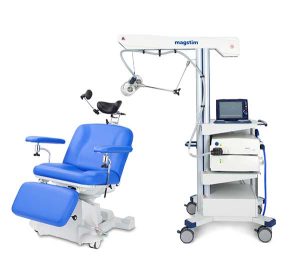A Proven Non-drug Treatment
Many Benefits of TMS Therapy
- FDA Cleared
- Non-drug
- Non-invasive
- No side effects of drugs
- Not ECT
- Long Lasting Relief
- Covered by Insurance
- Proven to work
In depressed patients, electrical activity in certain areas of the brain is reduced. Watch our video about what Magstim Trancranial Magnetic Stimulation (TMS) is and how it works to combat depression.

TMS has over two decades of clinical and scientific research supporting its safe use and application. FDA-cleared for the treatment of MDD, Magstim TMS Therapy is an effective, non-invasive, outpatient treatment, with few known side effects.
Transcranial Magnetic Stimulation (TMS) is a series of repetitive, brief and highly focused magnetic pulses, used to stimulate brain cells. TMS is an effective, non-invasive, outpatient treatment with few known side effects.
TMS is currently used in the treatment of depression and is usually prescribed when anti-depressants have failed.
When a nerve cell ‘fires’, an electrical impulse travels along its length. It communicates with other nerve cells by releasing neuro-transmitters, which create an electrical impulse in other cells. In depressed patients, the electrical activity in certain areas of the brain have been shown to be reduced. TMS uses a focused electromagnetic coil, to rapidly pulse a magnetic field to the targeted area of the brain.
The magnetic pulses induce an electrical current in the brain, stimulating the nerve cells, increasing the brain activity to normal levels.
TMS is a safe and well-tolerated treatment with few known side effects. Clinical studies show that the most common side effects are mild to moderate scalp discomfort and mild headaches, both of which are short-term.²
Medication like anti-depressants are systemic, which means that the medication is absorbed into the blood stream which can cause numerous side effects. TMS is typically prescribed when anti-depressants have failed or the side effects are intolerable; this may be called treatment resistant depression, or TRD.¹
Other treatments for TRD include Electro-Convulsive Therapy (ECT), which works by applying a brief electrical pulse to the brain that medically induces a seizure. ECT is performed in a hospital and you will be anesthetized and restrained during the procedure. ECT can be associated with numerous side effects. TMS is a gentle, non-systemic, outpatient procedure with has few known associated side effects. Patients can return to their daily activities after treatment.
Most insurances allow for TMS treatment over a 6-week period, 5 times per week. Each treatment is typically between 3 and 37.5 minutes depending on what the physician determines to be best for you.
TMS is covered by most insurance providers including Medicare (and by Medicaid in some states). Prior authorization is typically required for insurance coverage. Your physician will manage this process. Typically, treatment with antidepressant medications and psychotherapy may be needed before insurance will authorize TMS Therapy.
TMS Therapy is well tolerated for most. However, not all patients are appropriate candidates for TMS Therapy.
For example, patients with a history of seizures or who have metal implants or objects in or near their head are not appropriate candidates for TMS Therapy. To determine if TMS Therapy may be right for you, your supervising doctor or psychiatrist will carefully screen for the presence of medical conditions or metal objects which may make TMS unsuitable.
© 2024 Sahara Behavioral Health. All Rights Reserved.